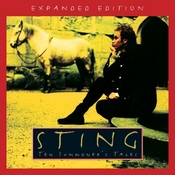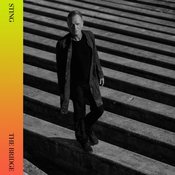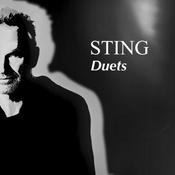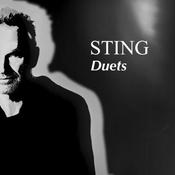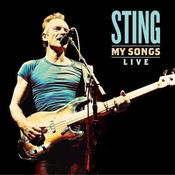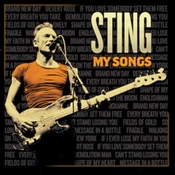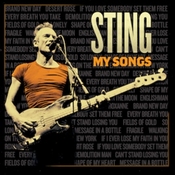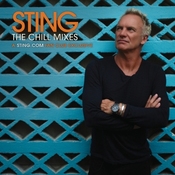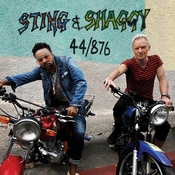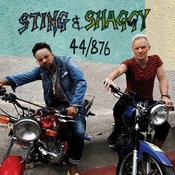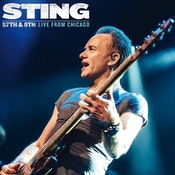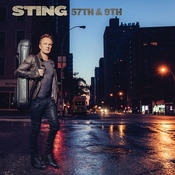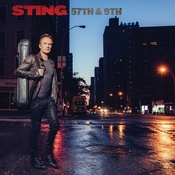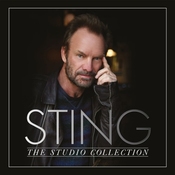Bring On The Night
Soundbites
"The film's about the formation of this group. It's about musicians from different areas forming a common language. A lot of the film is rehearsal footage in which we explain how arrangements are put together and how certain decisions are made; plus concert footage taken from the Mogador. So it's not just a concert movie. Hopefully it will explain how music is made. Most rock films are made about bands at the peak of their career or when they are finished - like 'The Last Waltz' or 'Let It Be'. I can't think of a film that's about a band starting off. It's being shot as a 35mm feature by Michael Apted - the director of 'Gorky Park', 'Coalminer's Daughter', 'Stardust', - and to me some of his best works were his documentaries for Granada. He did a series called '28 Up' which took children at the age of seven and interviewed them at seven year periods."
Sting, Record Mirror, 6/85
"Bring on the Night promotion was aimed at 15-year-olds. If we had tested it properly, perhaps we would have realized the movie is more for the 20- to 35-year-old crowd. When a 15-year-old thinks of a documentary, it's usually in terms of a film about aboriginal Indians baking manioc cakes in the South Amazon."
David Manson, the Producer in The Chicago Tribune, 12/85
"Maybe Sting and I made a mistake. We didn't want the film to look like an MTV version of the album (Sting's hit 'Dream of the Blue Turtles') but realize now we should have used the LP to sell the film. We avoided it. We underestimated the drawing power of the album. I think it will be a big video cassette seller, but I am disappointed. We wanted to get more juice out of the movie in movie houses."
Michael Apted, the Director in The Chicago Tribune, 12/85
"'Bring On The Night' is a part of that. It's about the life of a band in one week. I'm going to be very involved in the editing process of the film. I won't be just saying my lines. It's being shot as a feature movie, in environments that are meant to look like film sets. So it's a real movie, but there's no script. The thing that's interesting about the movie is that most rock films are about bands after they make it big or when they finish. This is about a band at the beginning. It's quite exciting, fresh."
Sting, Record, 1985
"It's an honest look at the beginning of a group and in that sense it's unique. I've never seen a film like it. Most bands don't have the funds to film the beginning, even though that's the most exciting part."
Sting, The San Diego Union-Tribune, 11/85
"This is the first film about the process, about how the music is created and how a band gets to the stage. And it's a character study. I didn't want to do just a concert film - I wanted to know about the people in a band. It's not a glorified look at the album or a puff piece for Sting or an extended MTV video. In fact, you'll notice that not a single song is played all the way through in the film."
Michael Apted, the Director in The San Diego Union-Tribune, 11/85
"The way we related to each other seemed right, and then one morning I had a whim. Wouldn't it be a great idea to do a film about starting a new band. But it became a reality very quickly. Before I could tell everyone it was just a joke, there were 120 people around us and we were spending all this money - somebody else's money. And I felt responsible, which is why I look so worried in the first part of the film."
Sting, The San Diego Union-Tribune, 11/85
Backgrounder
Review from The Miami Herald by Tom Moon
This was the sound Sting wanted all along. The sound Sting wanted for his jazz band didn't really come out on 'The Dream of the Blue Turtles'. It started to happen only when the six-piece outfit hit the road: Natural segues developed, linking past and present Sting compositions in a way he couldn't have orchestrated. Riffs delivered casually one night became huge motifs the next. For Sting, the static pop song was no more. His band played fresh, to the moment. Anything could happen.
So it's a good thing he chose to record the 'Blue Turtles' world tour. This two-record set, taken from the European segment, contains some classic Kenny Kirkland piano improvisations (especially on 'When the World Is Running Down'), some near-brilliant Branford Marsalis (on 'One World', where he quotes the standard 'Let's Fall in Love'), as well as propulsion from the never-let-up rhythm team of drummer Omar Hakim and bassist Darryl Jones.
The highlight is an 11-minute medley, 'One World (Not Three)' into 'Love Is the Seventh Wave'. Once the initial commotion dies down, Sting begins a long development section with Wes Montgomery-influenced block guitar chords. Soon the background vocalists come in, and an exchange develops over the 'Seventh Wave' lyrics. Just as the energy peaks, Sting switches to 'One World', leading a series of rhythmically challenging chant phrases that build to a furious soul revue-style climax. 'Bring on the Night' is the album Sting wanted to make all along, a genre-busting statement that works brilliantly on many levels.
Review from The Times by David Sinclair
Sting's double live album 'Bring on the Night' draws a neat line under the first year's activities of his all-star jazz musicians' band. The collection features songs from The Dream of the Blue Turtles album, and some reworked Police material, all expertly played, and expertly produced by Sting and his co-manager, Kim Turner. Perhaps the strongest feature to emerge is how well Sting has maintained his extraordinary facility to write great songs over a prolonged period of time. But the album's air of meticulous precision, which makes it hard to believe that it is a live album, is a worrying pointer to the future, suggesting that Sting needs the Police to protect him from his own perfectionist tendencies. If he is not careful, a couple more years with his current line-up and Sting will find himself entering the high-gloss middle-ground currently dominated by Phil Collins.
Review from Rolling Stone by Rob Tannebaum
As a high-profile plan for musical and racial integration, The Dream of the Blue Turtles was one of last year’s most significant projects. Unfortunately, the band Sting so carefully assembled was dominated by his earnest verbiage and limited by the requirements of his popmanship. Consequently, the record was an admirable muddle, hardly deserving of the ongoing documentation Sting seems to think it merits. After an album, a lengthy tour and a movie, a double live album may seem like narcissistic redundancy. But Bring On the Night is more fulfilling than any of the other Blue Turtle projects. Sting finally lets his band exhale, and the resulting gales can knock you down.
Sting correctly insists that his is not a jazz band - in the liner notes, he writes that the nomination of “The Dream of the Blue Turtles” for a jazz Grammy filled him with “horror and embarrassment” - but the instrumentalists all have distinguished jazz backgrounds, which means they’re more capable of compelling improvisation than almost any rock band. On this album, they navigate a smart selection of Blue Turtles material, wisely avoiding the hits. The cool strut of “Consider Me Gone” is especially good. But they’re shrewdest when rearranging old Police songs, the quality of which increases with the leniency of Sting’s leadership. During a “Bring On the Night”/”When the World Is Running Down” jam, keyboardist Kenny Kirkland’s barrelhouse romp prods Sting into celebrating the apocalypse. And saxophonist Branford Marsalis illuminates the coda of “Driven to Tears” with a white-light solo that pays tribute to Junior Walker.
Sting falters with the blues standard “Down So Long,” and more of the arrangements should swivel like “Demolition Man.” But the ensemble and individual playing tempers the singer’s grim scenarios and resuscitates the notion of an uncompromised jazz-rock fusion. If only the world tour had come before the recording sessions, Blue Turtles might have been this good.
Review from All About Jazz by Trevor MacLaren
With pop/rock group The Police, Sting (aka Gordon Sumner) created some of the greatest pop songs ever. These songs were a mix of pop, rock and ska meshed with articulate lyrics that would render the band's catalogue legendary. But as the band had peaked with its best selling record, Sting went off to pursue a solo career. During the process of creating his debut record, Sting sought out a separate path of musical ideas than the ones that made up his work with the Police. Sting looked back to his first love, which was jazz.
When taking to the studio to record what would be Dream of the Blue Turtles, Sting revisited the fusion sounds that were a part of his pre-Police band Last Exit, pulling together a band of killer jazz players that featured Omar Hakim, Kenny Kirkland, Daryl Jones and Branford Marsalis. The idea was so important that Sting had the sessions filmed and released as the documentary Bring on the Night. Due to the varying styles and pop overtones, Dream wasn't the jazz record that such players would be expected to make. In fact for many jazz fans thought it was all hype and no action. Yet the record has many redeeming qualities, namely its particular brand of fusion and Sting's brilliant songwriting.
With the release of the documentary came an expensive double live record that only appeared in North America on import and unfortunately did not get a lot of press. Bring on the Night was the jazz record that Sting hadn't made with Dream of the Blue Turtles. Over the course of the record, Sting band mates work their way through obscure and classic Police tracks and Blue Turtles material. With live atmosphere the band cuts loose and frees the restraint of recording a pop record. Though some tracks work better than others, the feel through out the record works more into the ideology of jazz than any post- or pre-Sting solo work. On this collection Sting helped to evolve a newer version of the jazz/pop/rock fusion.
Since he had the band and the chops, Bring on the Night brought to life many works that have failed in the past. It still doesn't stand-alone as an essential jazz or pop record, but makes a solid stance for a crossover record. Even though many fans of jazz detest any artist crossing over and claiming themselves a jazz player, Sting's intent opened the ears of pop fans who would normally have banished all jazz in sight.











